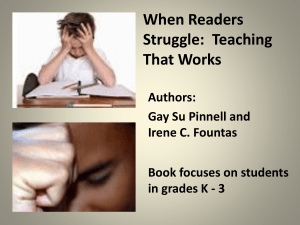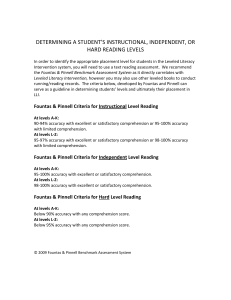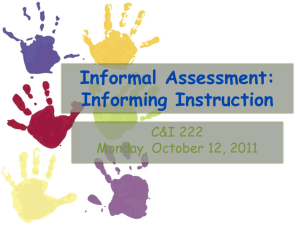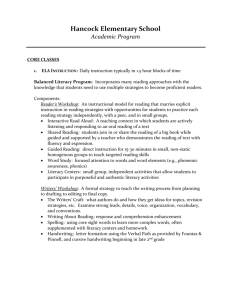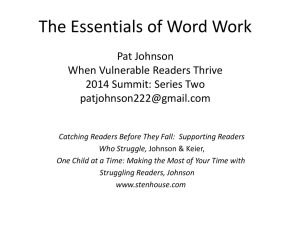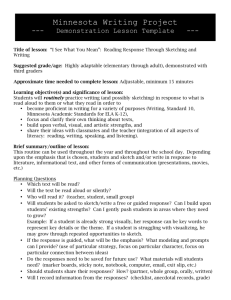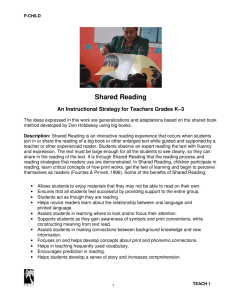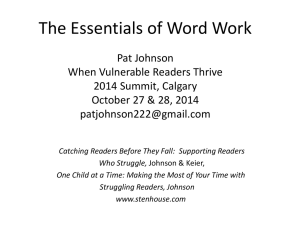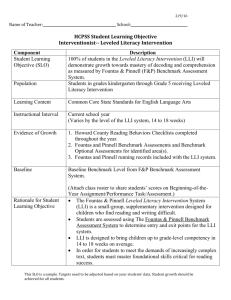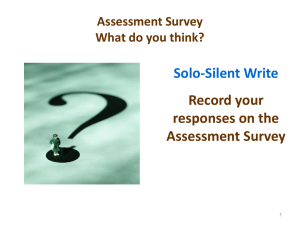Diagnostic Assessment Powerpoint
advertisement
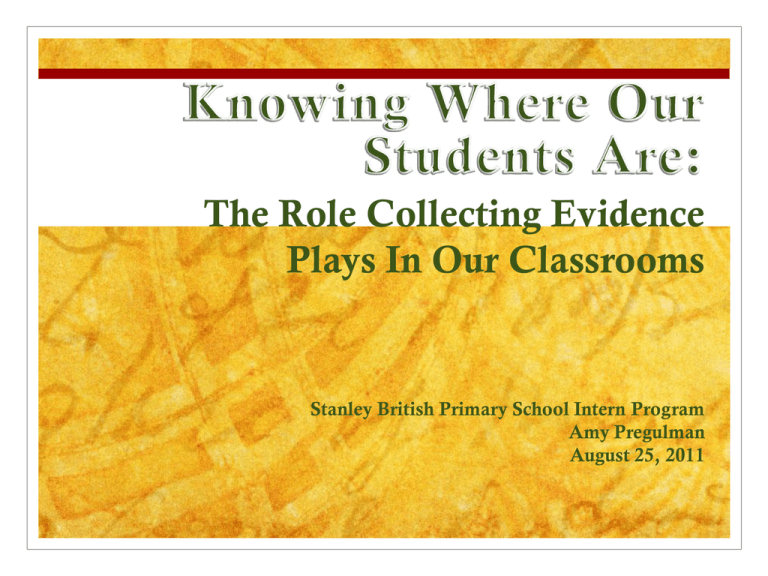
The Role Collecting Evidence Plays In Our Classrooms Stanley British Primary School Intern Program Amy Pregulman August 25, 2011 Our Time Together Guiding Questions: *How are we meeting each child’s needs? * How do we know? Learning Objectives * Articulate the difference between Diagnostic, Formative and Summative Assessment *Administer Fountas and Pinnell Benchmark Assessment *Score and articulate results from assessment to inform just right students’ reading level Time 3:40: Goals and Objectives for afternoon Introduction to Assessment Delving into Diagnostic Assessment Just Right Books 4:55 Stretch 5:00-6:00 Fountas and Pinnell 6:00-6:15 Debrief Don’t forget Exit tickets! Diagnostic: pre-assessment Formative: on-going assessment for learning. Summative: assessment of learning Diagnostic Assessment Pre-assessment Designed to determine a students’ entry point into learning objectives. What do they know now? Photo on driver’s license How does where they are effect my instruction? Essential for planning for student needs and differentiation to meaningfully support student learning Builds off students’ readiness, interests, learning profile Just Right Books Current Research: Independent Level Text High Interest: self-selected 95% accuracy rate (levels A-K) 98% accuracy rate (levels L-Z) High level of fluency and comprehension Readers need lots and lots of JR texts to get to be better readers Solve words easily Read fluently Comprehend easily Struggling Readers and Just Right Books Struggling readers need even more text! QUANTITY Increase vocabulary Internalize new language structures Develops fluency Increases comprehension Fountas and Pinnell Benchmark Assessment Diagnostic: pre-assessment Fountas and Pinnell Benchmark Assessment Dibels WIST WADE QRI DRA Formative: on-going assessment for learning. Summative: assessment of learning
